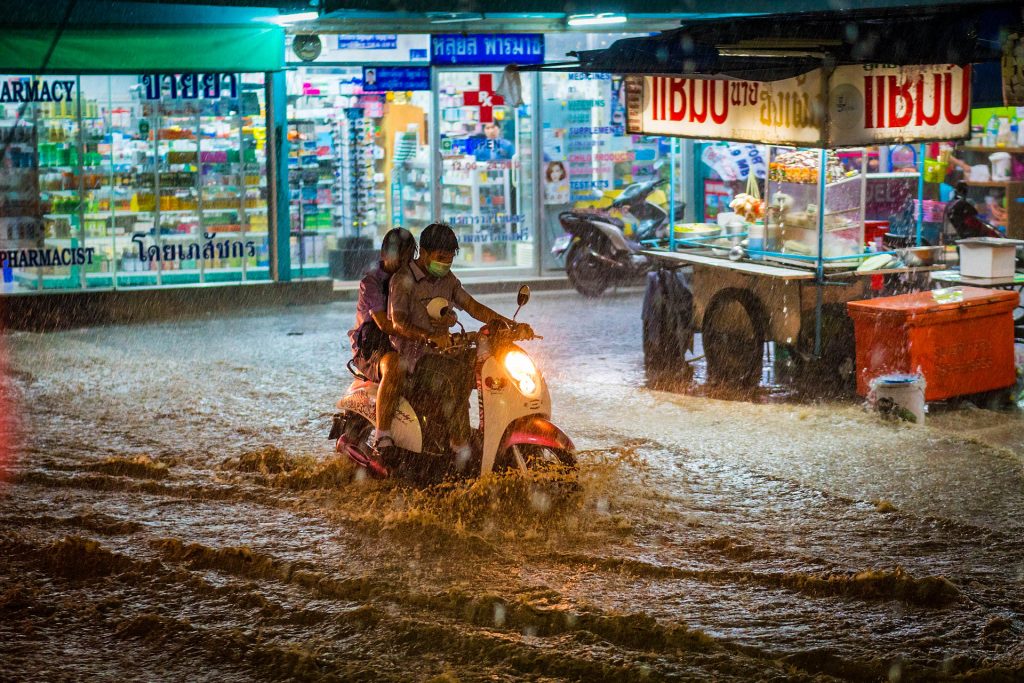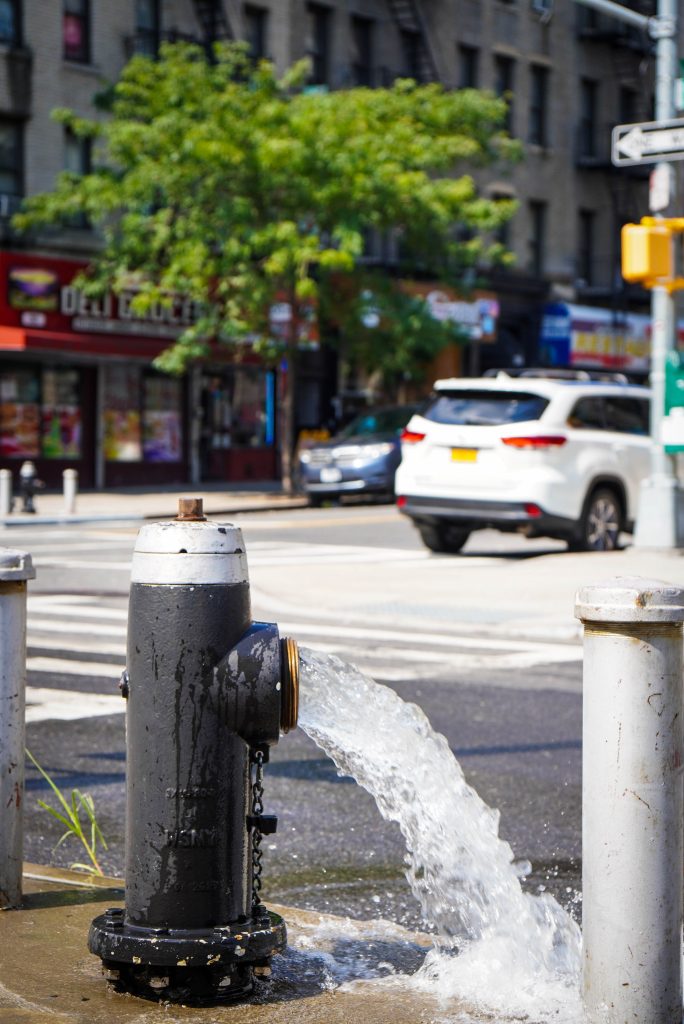What water is available to cities is unevenly distributed and increasingly stressed due to population growth. Human activity backed by poor policy safeguards increases volumes of wastewater, reduces that of potable quality, and triggers erratic drought-and-flood conditions by way of climate change. Effective urban water management is only possible if we understand the depth of the social, economic, and environmental challenges.
The distribution of water is affected by climate change and urban centres chock-full of tar and concrete. These impervious materials trap water on the surface, which disrupts hydrological cycles. Where once there was an abundance of water may now experience scarcity, whereas drier places can suddenly find they are blighted by floods.
Furthermore, urban expansion is imposing increasingly on the natural world as growing populations put ever-more strain on limited water resources.
Bigger Cities and Diminishing Urban Water
In the summer of 2022, 45% of the European Union was issued with drought warnings. It’s indicative of many regions globally and brings with it a grim forecast for ecology, society, and the economy.
Unicef reports that water shortages are occurring in urban districts as a result of “major intersecting trends, including population growth, unsustainable water management, poor governance, deteriorating infrastructure, inefficient water use, and increasing competition for water between different sectors.” Consequences are many.
Dry Rot
Few of us would think that too little water could affect the very buildings around us, yet in the Netherlands, that’s exactly what’s happened. A city built around canals, Amsterdam is propped up on wooden foundations submerged in the water table. But as levels dip, the poles are exposed. Fungus sets in and eats away at the wood. The beloved Rijksmuseum and hundreds of homes are subsiding.
Demand Outweighs Supply
In The Water-Sustainable City, David L. Feldman outlines the issue that, due to sprawl, city inhabitants live far from freshwater sources. We lay underground piping to direct water where it’s needed but this is difficult, disruptive, and expensive to maintain. It also diverts channels away from their natural routes, obliterating sensitive habitats.
Newly arid landscapes can result in desertification. Rates are on the up, posing risks to cities on almost every continent.
Industrial Inaction
A dry-out is bad news for consumables, too. Power stations rely on water for cooling and electricity generation. Without sufficient waterways, we lose an essential component in transportation and the production of goods.
Water stress and food poverty are closely interwoven. Drought prevents the replenishment of waterways, including river systems and underground aquifers used to irrigate crops, which subsequently fail.
Urban agriculture is sometimes pushed to desperation when faced with thirsty, failing produce. Water theft – syphoning stocks illegally – by farmers and industry further reduces levels of fresh and treatable water, causing tension with population centres.
Consequences of Water Stress
In July 2022, Bloomberg reported that Salt Lake City faced an unprecedented drought. Low costs for water and city regulation requiring half of domestic land to be covered by vegetation – which, in this desert city, relies on artificial irrigation – has encouraged wasteful water use. The consequences include a loss of “up to $2.17 billion per year, through lost mineral extraction, the decline in the shrimp and tourism industries, and health costs to area residents” because these sectors are so reliant upon ever diminishing water stocks.
Within water-stressed cities like Karachi, Pakistan, mafias exploit citizens’ needs by intercepting, stealing, and selling on municipal stocks – both clean and polluted – for cooking and drinking. Few can afford the prices they charge, but the costs to health and wellbeing for refusing such dubious services can be greater still.
Nature-based solutions support water management but, up to now, we’ve simply not been planning these into city design. It’s the same story for flooding…
A Foe Like Flooding
Humans interrupt the water cycle by altering topography through construction and habitat destruction, contributing majorly to climate change. As a result, weather events are becoming more extreme.
Climate change is causing sea levels to rise, adding extra threat to coastal cities through tidal flooding and erosion. Surprisingly, just 1 metre poses a very real danger to inland cities.
Natural waterways and city infrastructure are struggling with altered volumes of stormwater. Even manageable amounts of surface water collect on impervious surfaces, disrupting lives, throwing local economies into chaos, and increasing the spread of life-threatening diseases like malaria and dengue fever.

A Question of Waste
Runoff presents additional challenges. This takes with it whatever pollutants line the streets, from oil and fertilisers, to dogs’ mess, cigarette butts, grass clippings, or household plastics. This presents a danger to aquatic health, ecosystems, and food chains – that includes us!
In the US, 772 cities are built upon combined sewer systems, with separate pipes that whisk freshwater, wastewater, and sewage to treatment centres. To prevent flooding in times of storms and snowmelt, however, an overflow failsafe kicks in; waste contaminants the clean water and is flushed out into rivers and coastlines.
This occurs an estimated 75,000 times in the United States each year. In 2019, the Guardian reports, some of the 200,000 incidents of discharging raw sewage into England’s river systems were illegal, but most held up to (weak!) legislation. The UK Environment Agency even generates income by issuing permits for polluting activity so is unlikely to change any time soon.
Chasing Waterfalls – Financing Urban Water Management
As this shows, whether as carrot or stick, money is always an incentive to act… or not!
Lack of significant investment results in poor, ageing, or unmaintained piping, leading to leaks which waste valuable freshwater. Approximately 2.1 trillion gallons of potable H2O is lost in the US each year this way, as is 23% of the public water supply in both the UK and the EU; it’s as high as 70% in low-income countries.
Financial impacts are huge! Globally, leaks amount to losses of $15 billion USD each year!

David Feldman indicates that, rather than observing a moral obligation to conserve water, developers are preoccupied with return on investment – they want a guarantee of substantial monetary value before building in urban water management solutions.
Likewise, ideas of prosecuting big polluters fall short. Fines are only occasionally dished out and rarely substantial enough to scare off perpetrators. When chief executives of companies dumping raw sewage into natural systems are instead rewarded for making shareholders richer, there is little catalyst to improve.
BOSAQ links an absence of fiscal deterrents led by governments with the continuation of harmful business-as-usual: “Without sufficient rules or penalties in place, there is less incentive to implement the necessary practices and procedures to reduce pollution levels. This can be at national level in the absence of any binding regional framework, filtering down to municipal and company level if national legislation is not in place.”
Governance, Sanitation & Demographic Disparities
Weak policy – and a glut of those willing to implement or enforce it – has a hand in inequity, too.
Panchali Saikia, Programme Manager of the Water and Sanitation Programme team with the Stockholm International Water Institute (SIWI), told us that access to sanitation – a basic human right – is still denied to many.
Indian cities host 64 million people in dense informal settlements. “The infrastructure is in such a way that you cannot build household-level sanitation facilities,” Panchali informs us.
Worldwide, access to sanitary toilets dropped by 20% in the 2000-2008 period. Infrastructure cannot keep up with the unprecedented rate of city expansion.
In India’s slums, Panchali reiterates, citizens are “mostly dependent on community toilets and sanitation facilities”. This impacts on men and women differently.

Provision of menstrual hygiene facilities is too often neglected by planners, as is safety. Toilet blocks frequently lack the lighting needed to improve night-time security. Women risk attacks or endangering their health by holding on until daybreak.
Panchali notes that – like she has seen in Sweden – there have been cases of women and people with reduced mobility in many cities needing to pay to access the same block of public loos where men went for free. The poorest citizens are unlikely to be able to afford them.
SIWI’s research into toilets in public spaces also uncovered a pattern of long queues outside female toilets while the men’s might be empty. “Women need more time,” Panchali observes, and “differently-abled people” were seldom considered when provisions were installed.
“If there is a sanitation facility being built, you really need to look into whether it’s accessible, affordable, and acceptable for everyone.”
If we’re to overcome any of these challenges and create a future where we have an equal share of clean water for all our needs, citizens, planners, decision-makers, contractors, utility companies, and our elected leaders need to start cooperating and coordinating sustainable and thoughtful water use, storage, distribution, and finance.
To find out what you can do, head over to our articles detailing how to get started. You may be surprised at how easy some steps can be.


